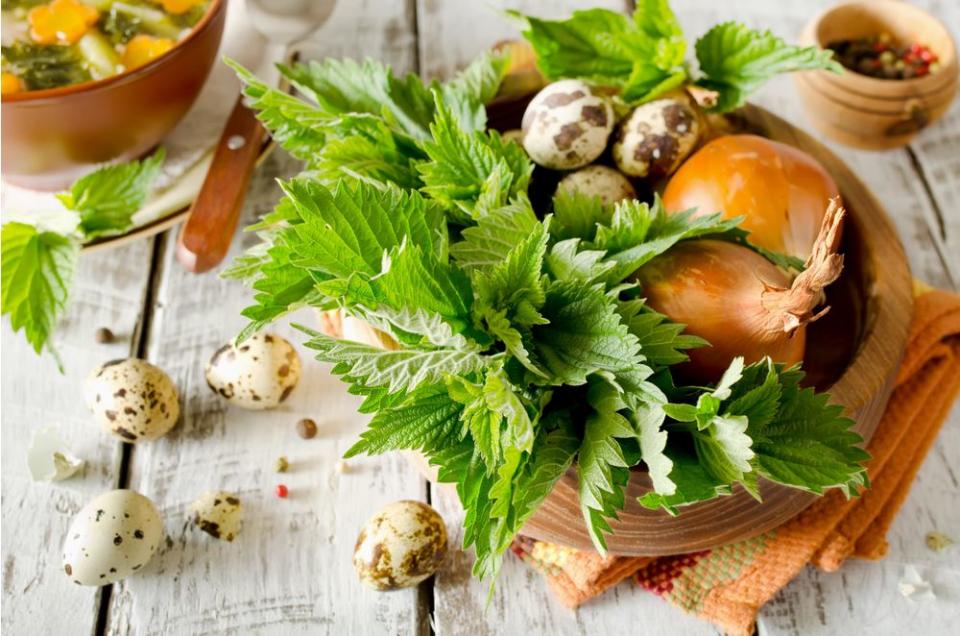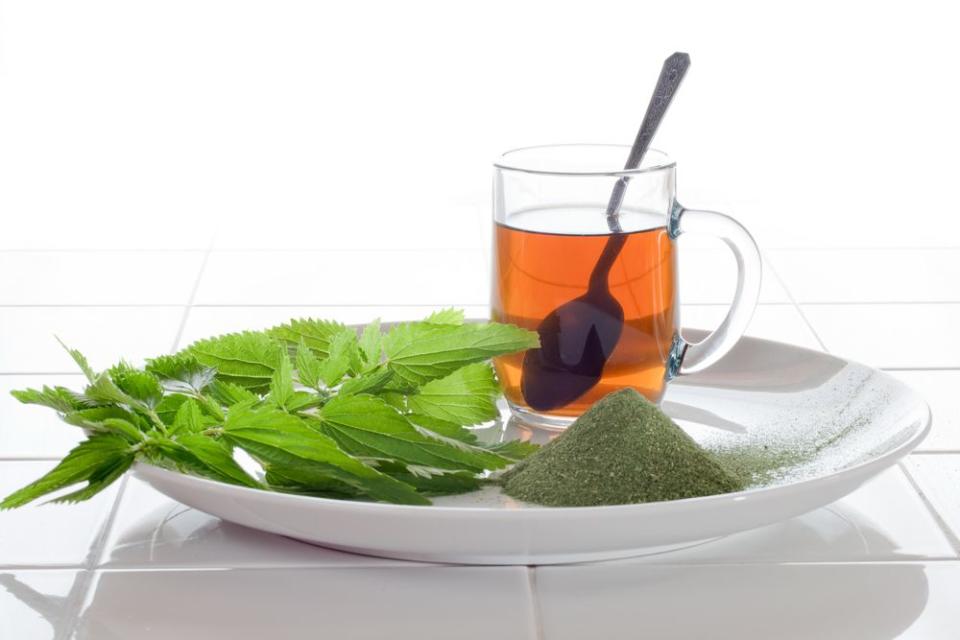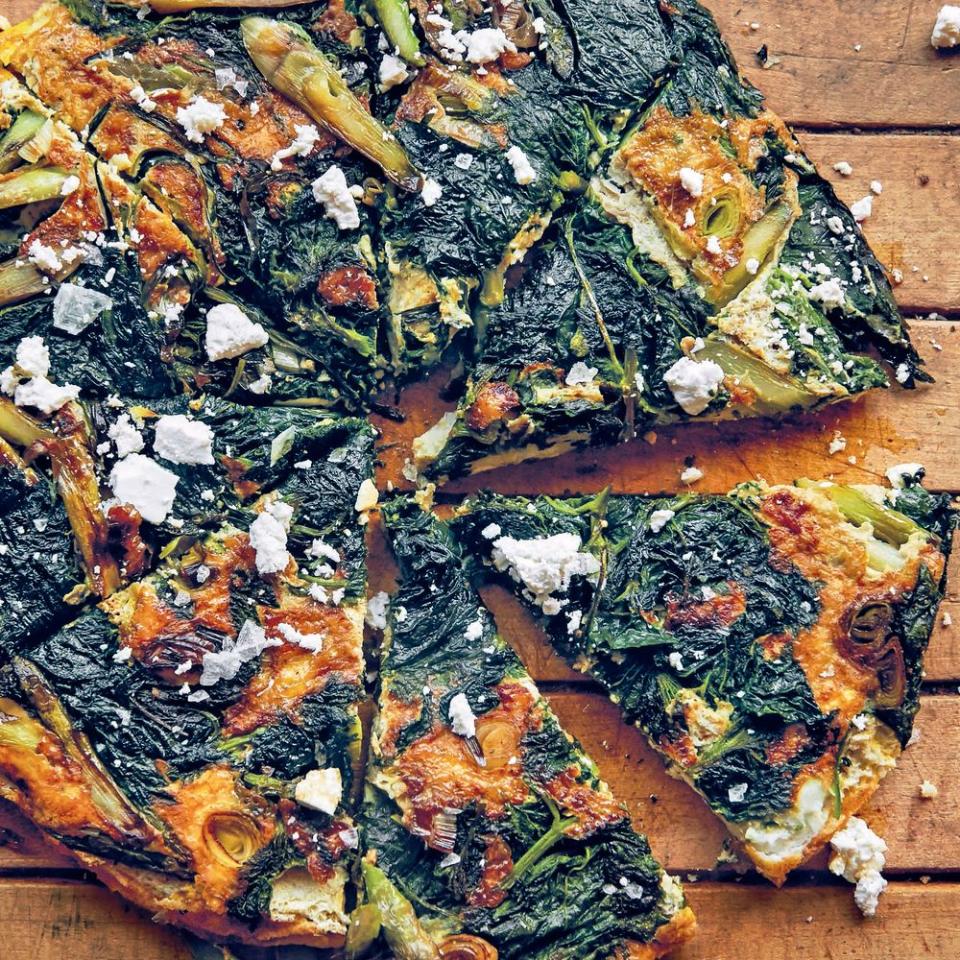What Is Nettle and What Does It Taste Like?

With a flavor as rich as its history, what’s not to love about nettle? Here’s what you need to know about the spring veggie, including how to (safely) incorporate it into your next meal:
What Is Nettle?
Nettle, also known as Urtica dioica, common, or stinging nettle, is an herbaceous flowering plant.
Though it was once localized to Europe, Asia, and parts of North Africa, nettle is now found all over the world.
The tall green plant, which resembles mint, is covered in delicate white flowers and tiny hairs.
Nettles may look innocent enough, but don’t let their daintiness fool you: They sting.
The sharp hairs (trichomes) act as hypodermic needles, injecting histamine into the unlucky person who touches them. Though typically relatively harmless to humans, this can produce a painful sensation at the site of contact. Burning, itchiness, and redness caused by touching nettle will usually subside after a few hours or with the use of antihistamine creams, like Benadryl.
Related: What Is Watercress and What Does It Taste Like?
What Does Nettle Taste Like?

Nettle tastes like spinach, but a bit punchier.
“It's a distinctive taste, characteristic of edible wild plants in general: a bright green note that makes you sit up and pay attention, with a peppery zing. Imagine an untamed spinach,” Langdon Cook, author of Fat of the Land: Adventures of a 21st Century Forager, told Wall Street Journal in 2009.
Nettle History
Despite its rather inflammatory properties (pun intended), nettle has a long history of culinary, medicinal, and textile uses.
Possibly before it was commonly ingested, nettle was used to make fabrics. Burial shrouds made of the plant have been unearthed in Denmark and traced back to the Bronze Age.
Europeans and Native Americans were known to use the fibers from the plant to make sailcloth, sacking, cordage, and fishing nets, according to Herbal Legacy.
In more recent history, a textile shortage forced German soldiers to use nettle-based fabrics in place of cotton during World War 1.
Medicinal Use

Nettle is perhaps most often associated with herbal remedies.
Urtification, the act of flogging oneself or another person with fresh nettle to irritate the skin and stimulate blood flow, has been used by many cultures for thousands of years to treat everything from arthritis to comas.
Centuries after Hippocrates outlined more than 60 medicinal uses of nettle, 16th-century herbalist John Gerard recommended the plant as an antidote to poison.
Here’s a short (definitely not conclusive) list of medical conditions nettle has been purported to treat throughout history:
Rheumatism
Lethargy
Paralysis
Coma
Excessive menstruation
Pleurisy
Asthma
Mouth ulcers
Shingles
Diarrhea
Constipation
Dry skin
Kidney stones
High blood pressure
Acne
Culinary Use
It may seem dangerous to eat a plant that is known to irritate skin, but soaking or cooking nettle leaves removes the stinging chemicals and render them harmless.
Since it tastes so similar to spinach, cooked nettle is used in many of the same ways: in pastas, in sauces, in soups, or sauteed and served as a side.
One of the most common ways to consume the plant is drinking nettle tea.
Nettle Benefits
Whether you’re drinking nettle tea, eating a meal made with nettle, or taking a nettle supplement, the plant is quite good for you. Here are some nutritional highlights:
Several chemicals found in nettle have anti-inflammatory or pain-relieving qualities.
Rich in vitamins A, B, C, and K.
High in calcium, iron, magnesium, phosphorus, potassium, and sodium.
Contains all 20 essential amino acids.
High in antioxidants, which may help prevent certain chronic diseases.
Nettle Substitute
WATCH: How to Make Cheesy Spinach and Bacon Stuffed Potatoes
Surprise, surprise: The best substitute for cooked nettle is cooked spinach.
The two greens can be used in almost the same exact ways.
However, if you’re substituting nettles for spinach, remember that nettles are only edible when cooked—so no raw nettle salads! For obvious reasons, never eat a raw nettle leaf.
Related: 100 New Ways to Try Spinach
How to Find and Prepare Nettles
Nettle is available at some well-stocked holistic grocery stores when it’s in season (spring). However, many herbal enthusiasts prefer to forage for their own nettle. If you choose to go down this path, it’s absolutely essential that you are certain that what you’re picking is actually nettle and not a dangerous weed.
Once you’re sure you’ve found a bona fide nettle patch (seriously—there’s no room for guessing here), pick the plant with sturdy gardening gloves. Nettle is best in early spring before it has flowered.
The easiest way to destroy the stingers and prepare nettles for cooking is through blanching: Bring a large pot of water to a boil, submerge nettles for a few minutes, drain, and immediately rinse under cold water to stop the cooking process.
Once strained and stored properly, they’ll be fine in the freezer for up to a year.
Remember: Nettle is like spinach in more ways than one. Like spinach, it reduces like crazy when cooked. Don’t be disappointed if you start out with an abundance of fresh leaves and end up with a measly pile of cooked greens. It’s just the nature of the beast.
Nettle Recipes

Ready to try your hand at cooking with nettle? We’ve got you covered. From frittata to pizza, here are a few of our favorite recipes that put the ancient plant front and center:

